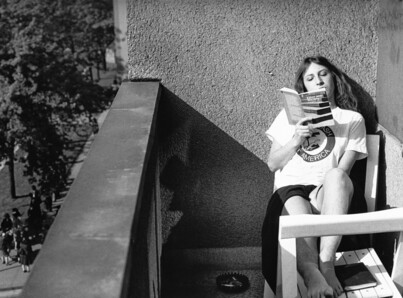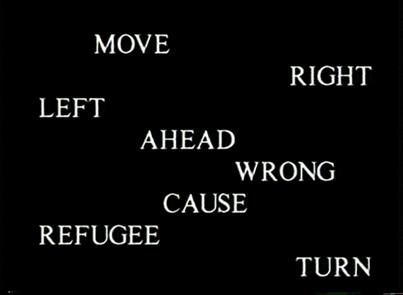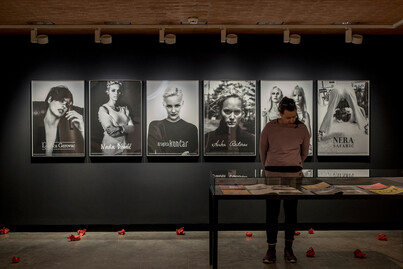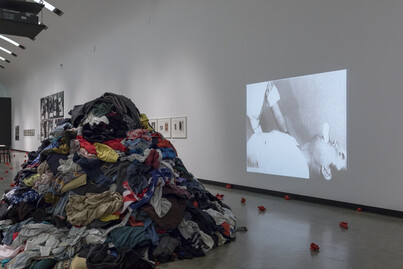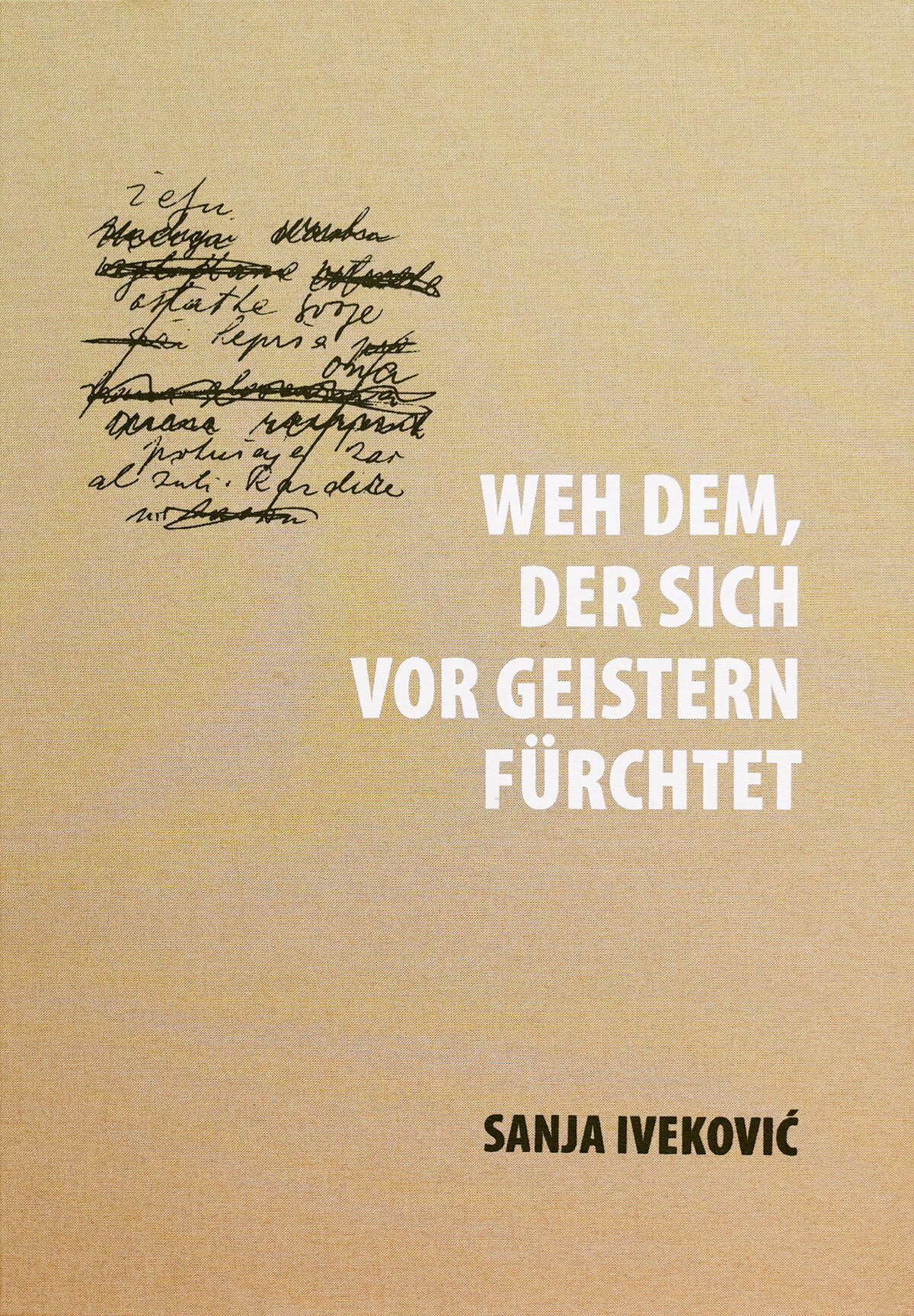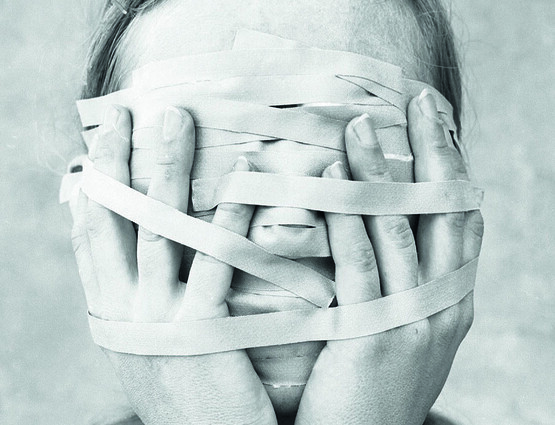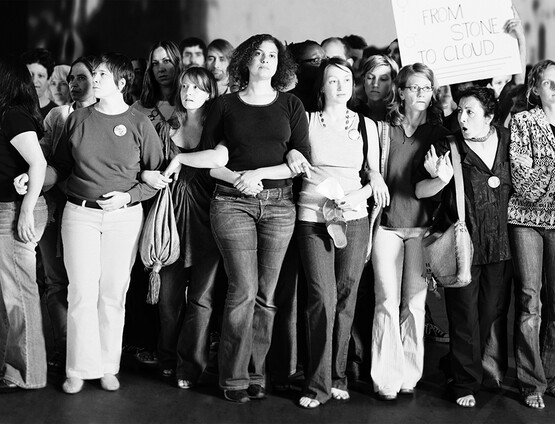
Sanja Iveković: Works of Heart (1974–2022)
by Patricia Allmer
Reviews /
Exhibition
• 15.02.2023
This major retrospective of the Croatian artist Sanja Iveković (b.1949) shows forty-eight works across various media, including installation, montage, performance, film, video, sculpture and drawing. It demonstrates the breadth and range of her practice, from early feminist works made in the 1970s, created as part of the Nova umjetnička praksa (New art practice) movement in Socialist Yugoslavia, to those made during the Balkan transition from socialism to democratic capitalist systems as well as current projects focused on violence against women in different national contexts. The exhibition includes some of her best-known works, including the series Tragedija jedne Venere (Tragedy of a Venus; 1975), which relies on her signature practice of juxtaposing private photographs with tabloid and media images of women, in this case Marilyn Monroe. There are also photographs of her performance Trokut (Triangle) FIG.1, which took place during an official visit of the Yugoslavian president Josip Broz Tito to Zagreb in 1979. Residents were asked to stay away from their windows and balconies during the visit, but the artist disobeyed orders, instead drinking, smoking and simulating masturbation until the police stopped her.
The exhibition is curated by the Director of the Museum of Contemporary Art Zagreb, Zdenka Badovinac, in collaboration with the artist. Little intervention has been made to the exhibition space, leaving it open except for the darkened spaces at either end of the exhibition, which house three installations. This layout enables the emergence of echoes within and across Iveković’s works, practices and activisms, clearly showing the significance of montage as an artistic-activist strategy. The dialogues between works are enhanced through their sonic dimensions, which interlace to create a striking soundscape. For example, an unnervingly monotonous drip of water emanates from the video installation Resnik FIG.2, echoing throughout the exhibition. The work is titled after a refugee camp near Zagreb and the sound manifests as a constant reminder of the often-invisible plight of refugees. Another continuous sound is the rushing and lapping of waves coming from Svjetionik (Lighthouse) FIG.3, a tall aluminium structure that looms over and seems to surveil the space. On top, a television shows a montage of flashing images, combining the artist’s private footage with excerpts from television programmes and news items.
The exhibition evolves along two axes. The first is Works of Heart FIG.4, which bookends the main exhibition space. The work consists of two enlarged images from page six of the New York Times from 6th February 1994, which covered the massacre of civilians at the Sarajevo market on the previous day. The headline ‘Shell Kills 61 and Wounds 200 in Sarajevo Market’ is accompanied by a photograph of a wounded woman, with closed eyes and a bloodied face. Next to this image the newspaper printed a Valentine’s Day jewellery advert captioned ‘Works of Heart’, which shows a model, eyes closed, wearing a crystal heart-shaped choker necklace and matching earrings. This latter image hangs at the beginning of the exhibition while the wounded woman is hung at the end, with the original newspaper page displayed in a vitrine underneath. It is this dynamism between glamorous media representation and political reality and violence, between intimate moments and mediated eternities, that plays out across the works in the exhibition.
The second axis is the artist’s mother, Nera Šafarić-Iveković, who was a political prisoner in Auschwitz for several years after she was arrested as a member of the communist resistance. She is primarily referenced in GEN XX (Ljubica Gerovac, Nera Šafarić, Baković sisters, Nada Dimić, Dragica Končar, Anka Butorac) FIG.5, a series of six prints that juxtapose images of fashion models from the 1990s with captions providing names and biographical information of women who fought in the antifascist resistance in Yugoslavia during the Second World War. Although they were celebrated during socialist Yugoslavia, they were subsequently erased from national history, as anti-fascist activities became equated with communism in the new nation state of 1990s Croatia. Displayed in front of the prints are the 1997–98 issues of the Croatian anti-war campaign magazine Arkzin, in which this series of images was originally published. As Ivet Ćurlin, one of the three members of the curatorial collective WHW and directors of Kunsthalle Wien, notes, the magazine was available at newsstands and offered ‘a ray of light in the dark’ at the time.1 Iveković’s mother appears again in copies of Weh dem, der sich vor Geistern fürchtet (Woe Betide Anyone Who is Afraid of Ghosts), the book published to accompany the exhibition, which includes around fifty of her poems alongside diary extracts and facsimiles of letters she wrote and received during her incarceration in Auschwitz.2
Questions around the ethics and politics of anonymisation thread throughout the exhibition. The ostensible anonymity of the white masks in Ženska kuća (Women’s House) FIG.6 acts as a counterpoint to the famous female faces of GEN XX. And yet these masks are specific: they are plaster casts of the faces of residents in women’s shelter organisations in Zagreb, Luxembourg, Bangkok and Genoa. In collaborative workshops, the women wrote short biographies, which are included here as captions to their individual casts, revealing their shared experiences of violence and anonymity across nations while simultaneously reclaiming their visibility. Similarly, the video work The Invisible Women of Erste Campus focuses on twenty female cleaners, who are mostly immigrants from south-eastern and Eastern Europe, drawing attention to a form of labour that is often invisible. Mind over Matter (Hiding Behind Compassion) FIG.7 questions institutional responses to suffering, juxtaposing a large heap of donated clothing, which visitors are invited to take home, with a slow-motion film clip from a 1950s American documentary that shows a nameless man receiving electroconvulsive therapy. This work also generates iconographical associations with the piles of shoes and personal items displayed in the Auschwitz-Birkenau State Museum. The Holocaust is a recurring concern for the artist, and she returns to it again in the installation The Rohrbach Living Memorial FIG.8. Situated in one of the darkened spaces that is separate to the open layout of the exhibition, this work shows a 1940 photograph of a group of Romani and Sinti people inside the labour camp in Belzec, alongside a filmed performance of residents of the Austrian city of Rohrbach restaging this photograph in 2005.
Through her prolific practice, Iveković questions the possibility of documenting repressed or silenced people and histories. In addition to the publication, the exhibition is accompanied by an extensive booklet, which offers explanatory texts for the works on display, further reflecting the impetus to document work by women artists as a counterstrategy to their repeated erasure from art-historical narratives.3 Conversely, documentation is problematised in Report on Gender-based Violence Against Women Refugees in Austria (2022) – an ongoing practice in which Iveković uses edited versions of shadow reports for each of her exhibitions. Strewn across the floor throughout the exhibition space, these crumpled pieces of red paper are reminiscent of poppies or roses. Visitors can pick the report up, read it, kick it, stand on it, avoid it, play with it or take it home. This is a pointed marker of our choices in how to engage with the ethicopolitical questions raised by this historically urgent exhibition.




